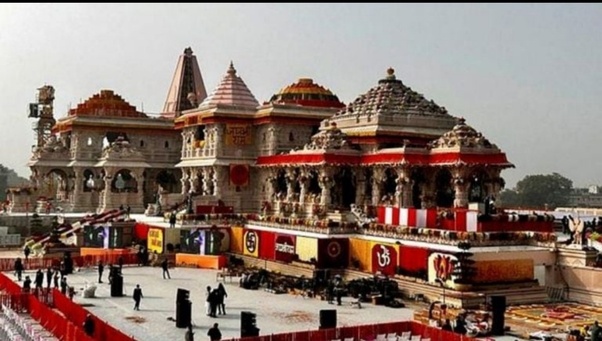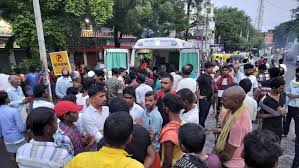Why BJP failed to get Ayodhya’s blessings despite Ram Mandir?
Even as the BJP failed to get a majority on its own and banked on its allies to secure a third term, the party’s surprising defeat in Faizabad, which houses the Ram Mandir in Ayodhya, has hit headlines and sparked a debate.
In fact, the BJP’s defeat came just four months after the consecration ceremony of the new idol of Ram Lalla in the grand temple in Ayodhya. Samajwadi Party’s Awadhesh Prasad defeated BJP’s Lallu Singh by 54,500 votes.
Several reasons have been attributed to the BJP’s shock setback in the temple town. Alienation of OBCs and Dalits from the BJP, Akhilesh Yadav’s ploy of striking a solid caste equation, resentment among locals for not getting compensation for their land taken over for the development of Ayodha are some of the reasons. A section also linked the BJP’s loss to tension between the party’s Delhi and Lucknow units.
How BJP’S ‘400 PAAR’ Slogon Backfired
Moreover, Faizabad is also one of the seats that has the strongest caste equation in favour of the Samajwadi Party vote bank. Also, what seems to have worked for the Samajwadi Party was the narrative of BJP changing the Constitution if it received a brute majority.
In fact, BJP’s Lallu Singh was the first to say in Ayodhya that the Constitution would be changed if the BJP got more than 400 seats. After that, the Samajwadi Party whipped up a narrative on the issue, alleging that the BJP wanted to end the reservation given to the backwards, Dalits, minorities by changing the Constitution.
The issue gained so much momentum that the BJP kept giving clarifications about it throughout the elections and lost its plot.
Since 1984, the Samajwadi Party and the Congress have won the Faizabad seat twice each. The BJP gained prominence in Ayodhya after 1991.
Vinay Katiyar, a Kurmi and Hindutva face of the BJP, won three times from the seat while Mitra Sen Yadav of the Samajwadi Party was elected here in 1989, 1998 and 2004.Â
In 2004, the BJP removed its OBC face Katiyar and made Lallu Singh the candidate. Singh won the seat two consecutive times, in 2014 and 2019. The BJP won the past two elections riding on a “Modi wave” but as soon as caste became the main issue, the party lost.
AKHILESH YADAV GETS CASTE EQUATION SPOT ON
The caste equation in Faizabad is being seen as the major reason behind the BJP’s loss. Ayodhya has the highest number of OBC voters, with Kurmis and Yadavs forming the largest chunk.
OBCs constitute 22% of the electorate and Dalits 21%. Among the Dalits, the Pasi community has the maximum voters. The winning candidate, Awadhesh Prasad, comes from the Pasi community.
Muslims also comprise 18% of the electorate. Together, these three communities make up 50% of the electorate. This time, the three communities – OBCs, Dalits, Muslims – came together to hand the Samajwadi Party a memorable win in Faizabad.Â
Apart from this, there was widespread resentment among locals for not getting compensation after their lands were taken for development of Ayodhya.
There were murmurs that while Ayodhya was developing and the Ram temple was being constructed, the people from remote villages were not getting any benefit. There were also discussions among locals that businessmen coming from outside were benefiting, while the people of Ayodhya were losing their lands to big projects.
The BJP did not only lose Ayodhya but also lost all the seats adjacent to the temple town – Basti, Ambedkarnagar, Barabanki. The Ayodhya result is not only being seen as the defeat of the BJP, but the defeat of their Hindutva vision.



